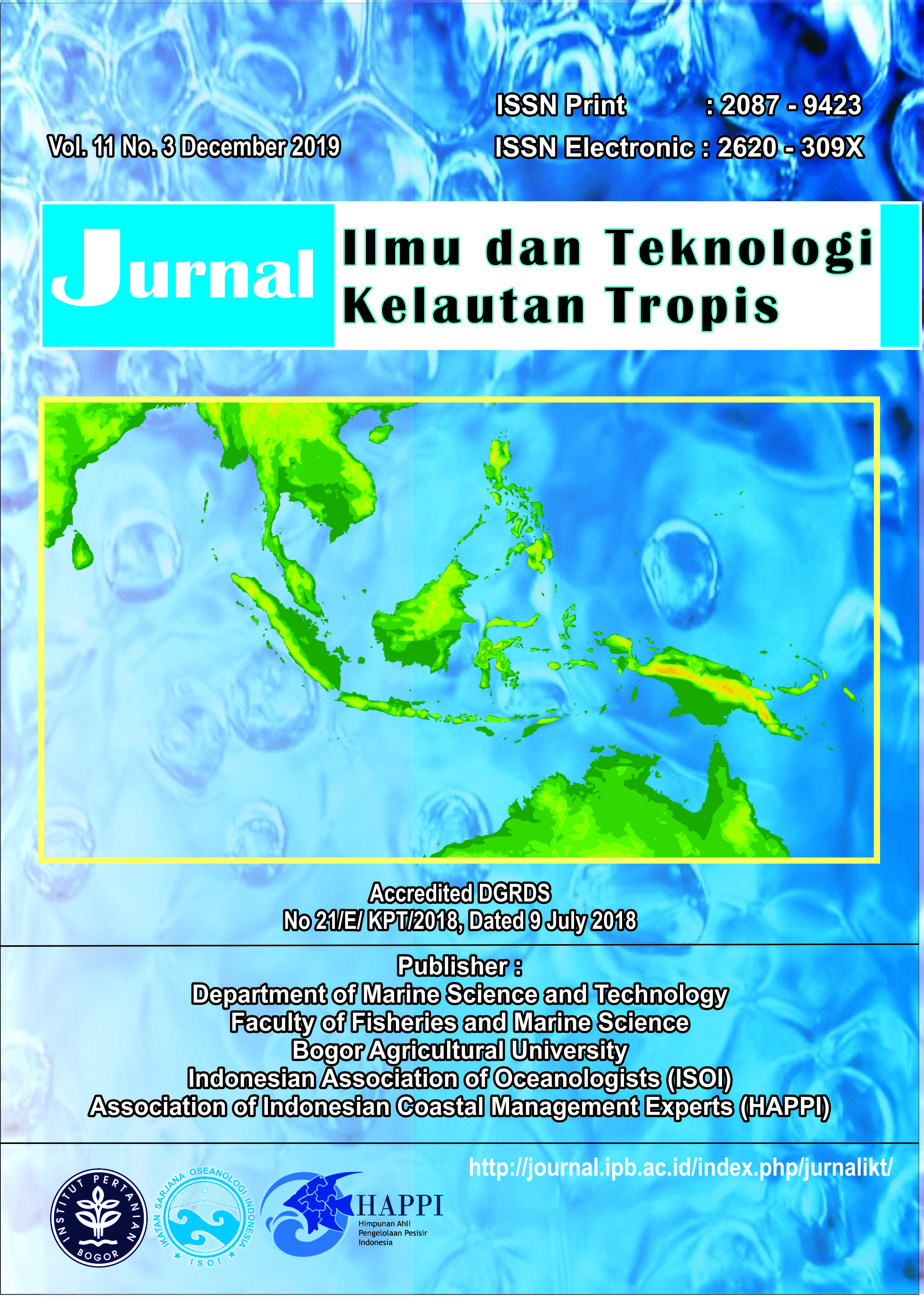BIOLOGICAL ASPECTS AND EXPLOITATION PAPUAN SEERFISH (Scomberomorus multiradiatus Munro, 1964) WITH GILLNET IN MERAUKE WATERS AND ADJACENTS
Abstract
Papuan mackerel (Scomberomorus multiradiatus) is a Papua endemic fish caught only in Merauke waters and adjacents. The exploitation of this fish by local people with the level of production has increased from year to year. In the management of Papuan mackerel fish populations, scientific studies are needed about biological aspects and their use by drifting gillnets. The study was conducted for 2 (two) years, March - December 2017 and April - December 2018 with survey methods assisted by enumerators monthly. Data on the composition of the catch of the gillnet drift dominantly demersal fish because it is operated in shallow waters that sweep to the bottom. Papuan mackerel is only about 6-10% of the total catch with a dominant size structure at 40 cm FL (fork length) and allometric positive growth pattern. The sex ratio of the fish is unbalanced with the male dominant compared to the female. The size of the first fish caught is getting smaller in size, namely 32.08 (2017) to 30.50 (2018) which can be an indication that the fish size is getting smaller. The growth rate (K) is around 0.64 which shows that the growth rate is relatively slow with the rate of death due to capture (F) higher than natural death (M). The exploitation of this fish has reached E = 0.70 or 140%, so a 40% reduction must be made from the current effort and by developing local wisdom so that the endemic fish population is maintained.
Authors
The author submitting the manuscript must understand and agree that the copyright of the article manuscript must be submitted/transferred to the Jurnal Ilmu dan Teknologi Kelautan Tropis. This work is licensed under the Creative Commons Attribution-ShareAlike 4.0 (CC BY-SA) International License in which the Author and Reader can copy and redistribute the material in any media or format, and remix, modify and build material for any purpose, but they must provide appropriate credit (citing articles or content), provide a link to the license, and indicate whether there is a change. If you mix, change, or create material, you must distribute your contribution under the same license as the original.


